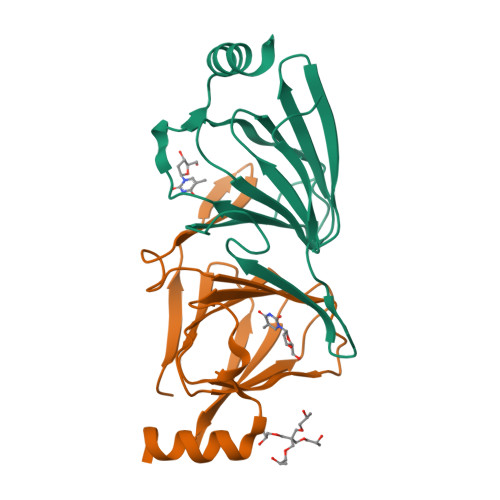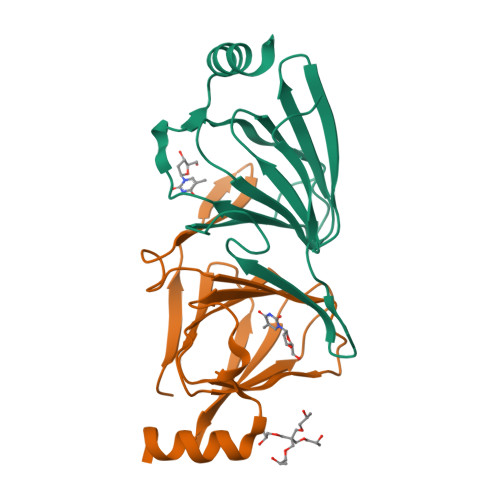Bacterial Sugar 3,4-Ketoisomerases: Structural Insight into Product Stereochemistry.
Thoden, J.B., Vinogradov, E., Gilbert, M., Salinger, A.J., Holden, H.M.(2015) Biochemistry 54: 4495-4506
- PubMed: 26125548
- DOI: https://doi.org/10.1021/acs.biochem.5b00541
- Primary Citation of Related Structures:
4ZU4, 4ZU5, 4ZU7 - PubMed Abstract:
3-Acetamido-3,6-dideoxy-d-galactose (Fuc3NAc) and 3-acetamido-3,6-dideoxy-d-glucose (Qui3NAc) are unusual sugars found on the lipopolysaccharides of Gram-negative bacteria and on the S-layers of Gram-positive bacteria. The 3,4-ketoisomerases, referred to as FdtA and QdtA, catalyze the third steps in the respective biosynthetic pathways for these sugars. Whereas both enzymes utilize the same substrate, the stereochemistries of their products are different. Specifically, the hydroxyl groups at the hexose C-4' positions assume the "galactose" and "glucose" configurations in the FdtA and QdtA products, respectively. In 2007 we reported the structure of the apoform of FdtA from Aneurinibacillus thermoaerophilus, which was followed in 2014 by the X-ray analysis of QdtA from Thermoanaerobacterium thermosaccharolyticum as a binary complex. Both of these enzymes belong to the cupin superfamily. Here we report a combined structural and enzymological study to explore the manner in which these enzymes control the stereochemistry of their products. Various site-directed mutant proteins of each enzyme were constructed, and their dTDP-sugar products were analyzed by NMR spectroscopy. In addition, the kinetic parameters for these protein variants were measured, and the structure of one, namely, the QdtA Y17R/R97H double mutant form, was determined to 2.3-Å resolution. Finally, in an attempt to obtain a model of FdtA with a bound dTDP-linked sugar, the 3,4-ketoisomerase domain of a bifunctional enzyme from Shewanella denitrificans was cloned, purified, and crystallized in the presence of a dTDP-linked sugar analogue. Taken together, the results from this investigation demonstrate that it is possible to convert a "galacto" enzyme into a "gluco" enzyme and vice versa.
Organizational Affiliation:
†Department of Biochemistry, University of Wisconsin, Madison, Wisconsin 53706, United States.




















